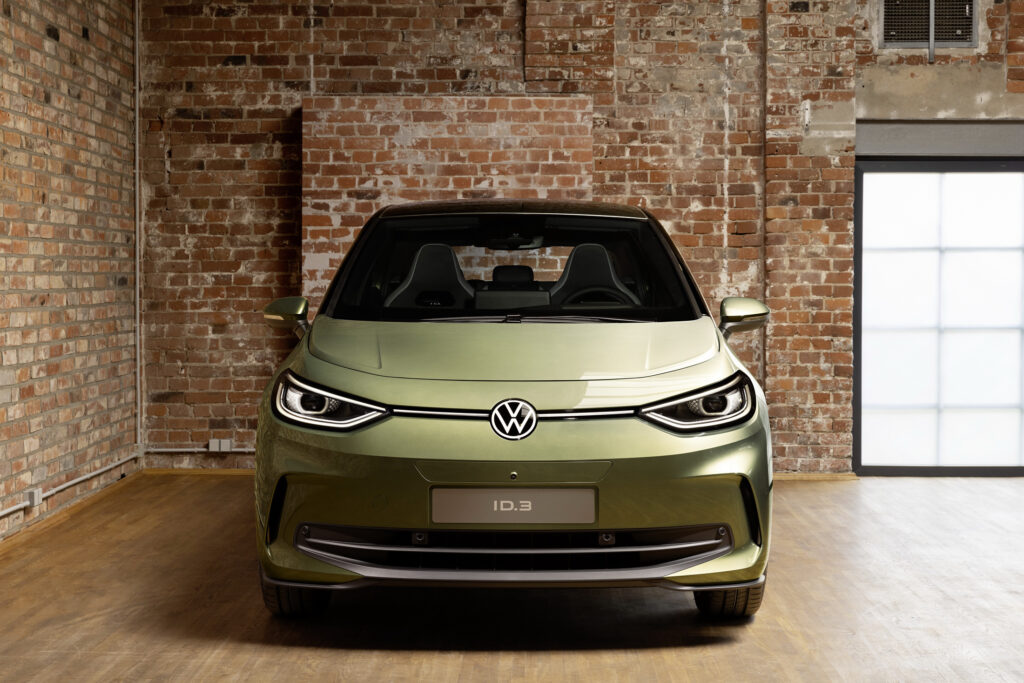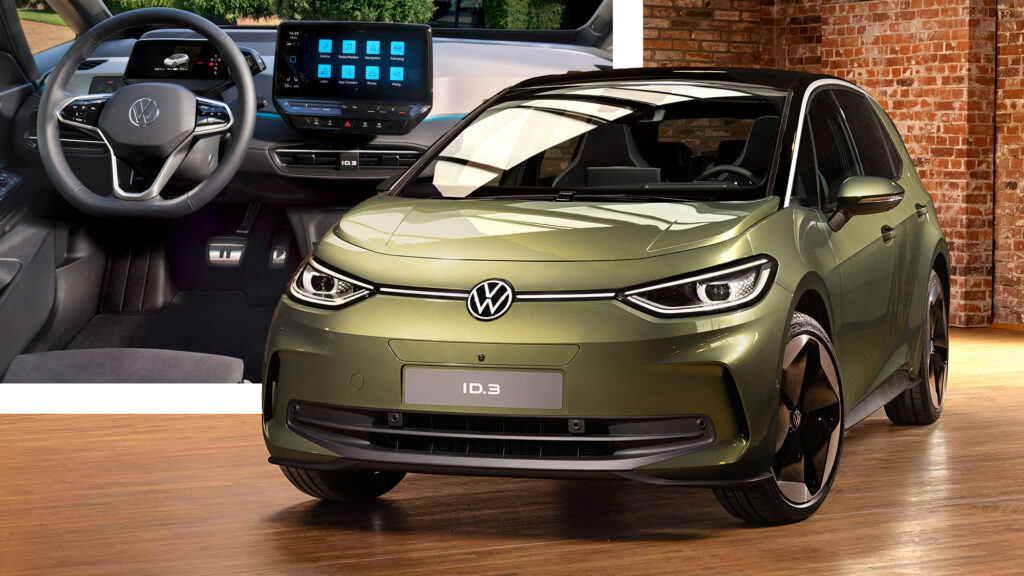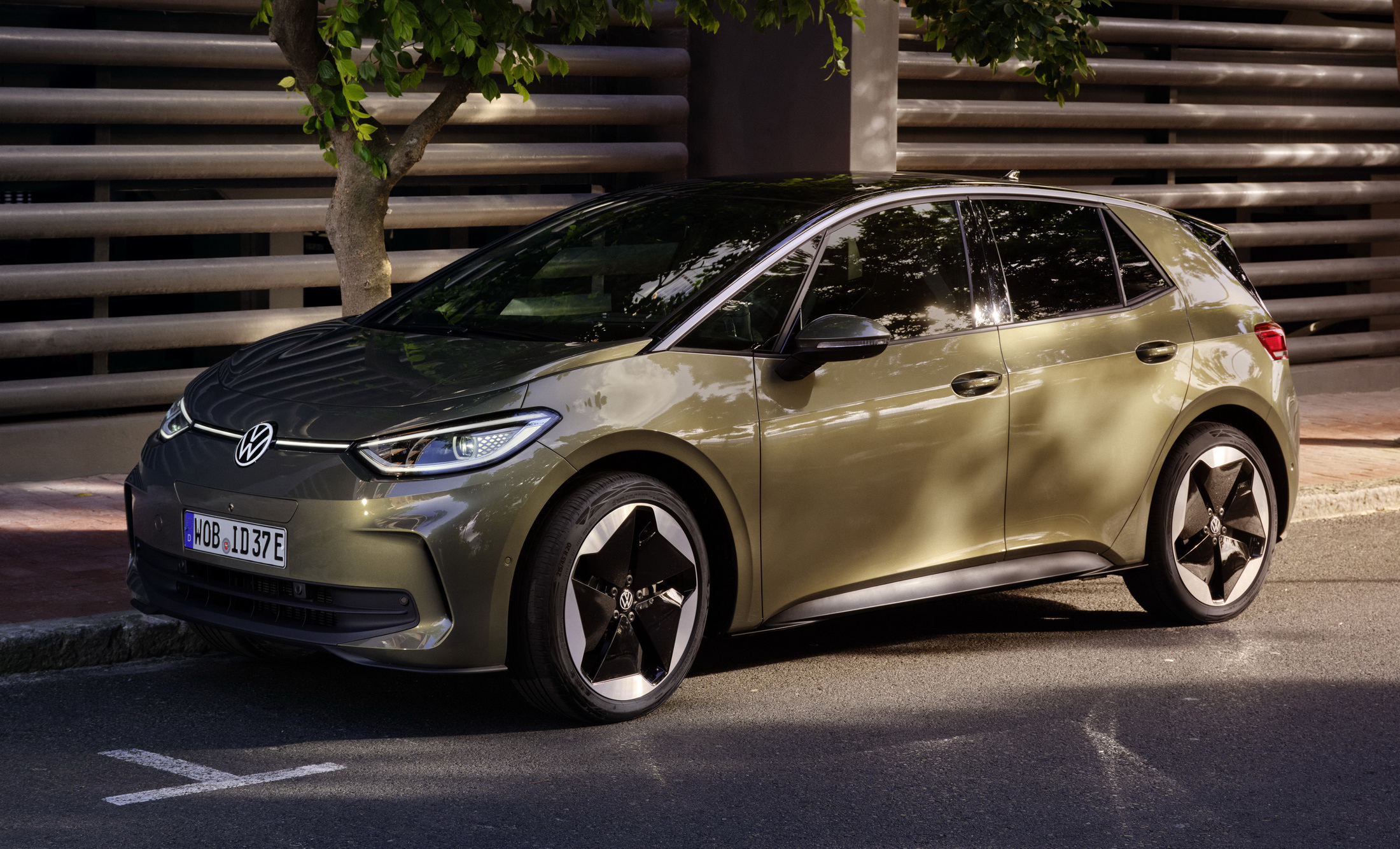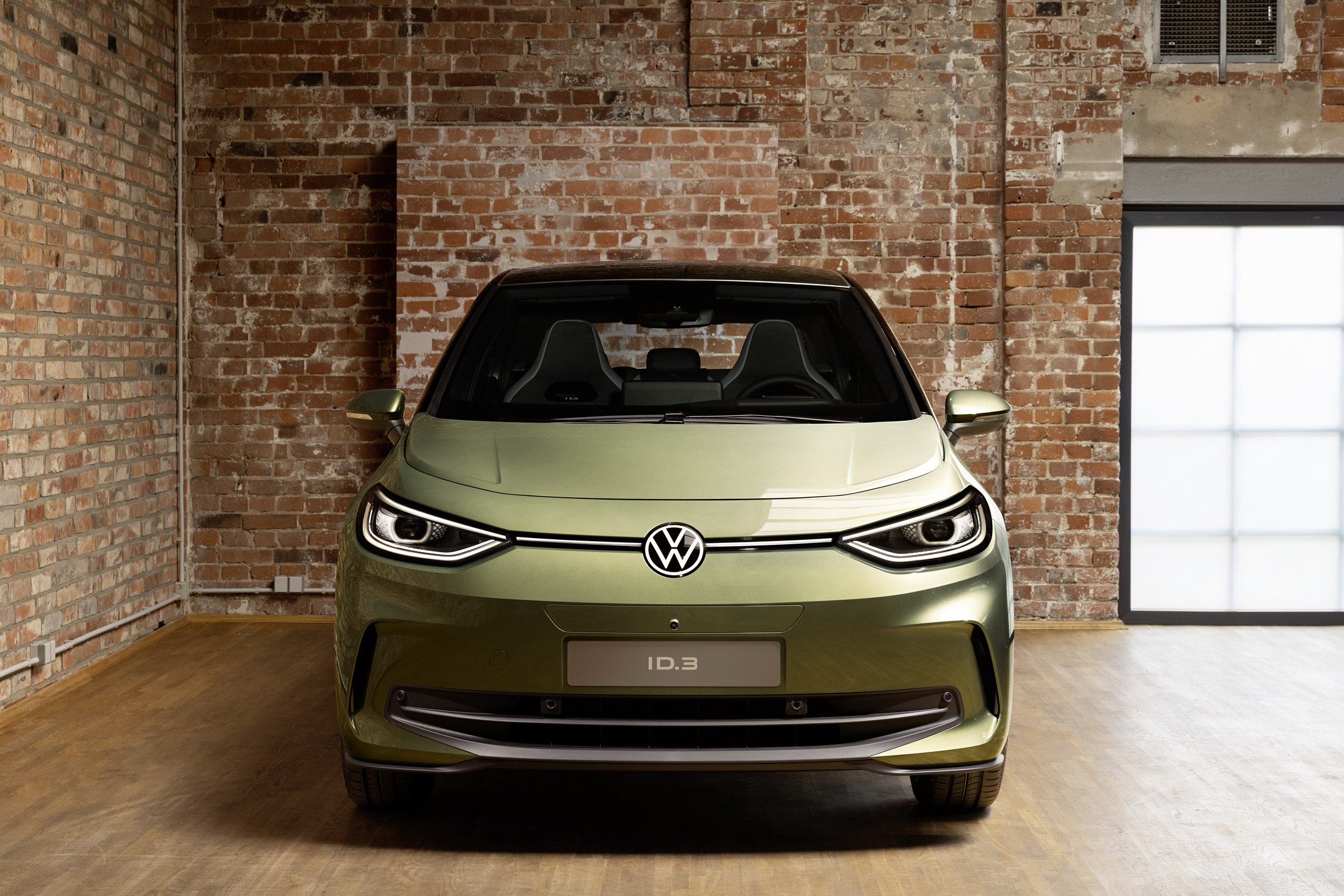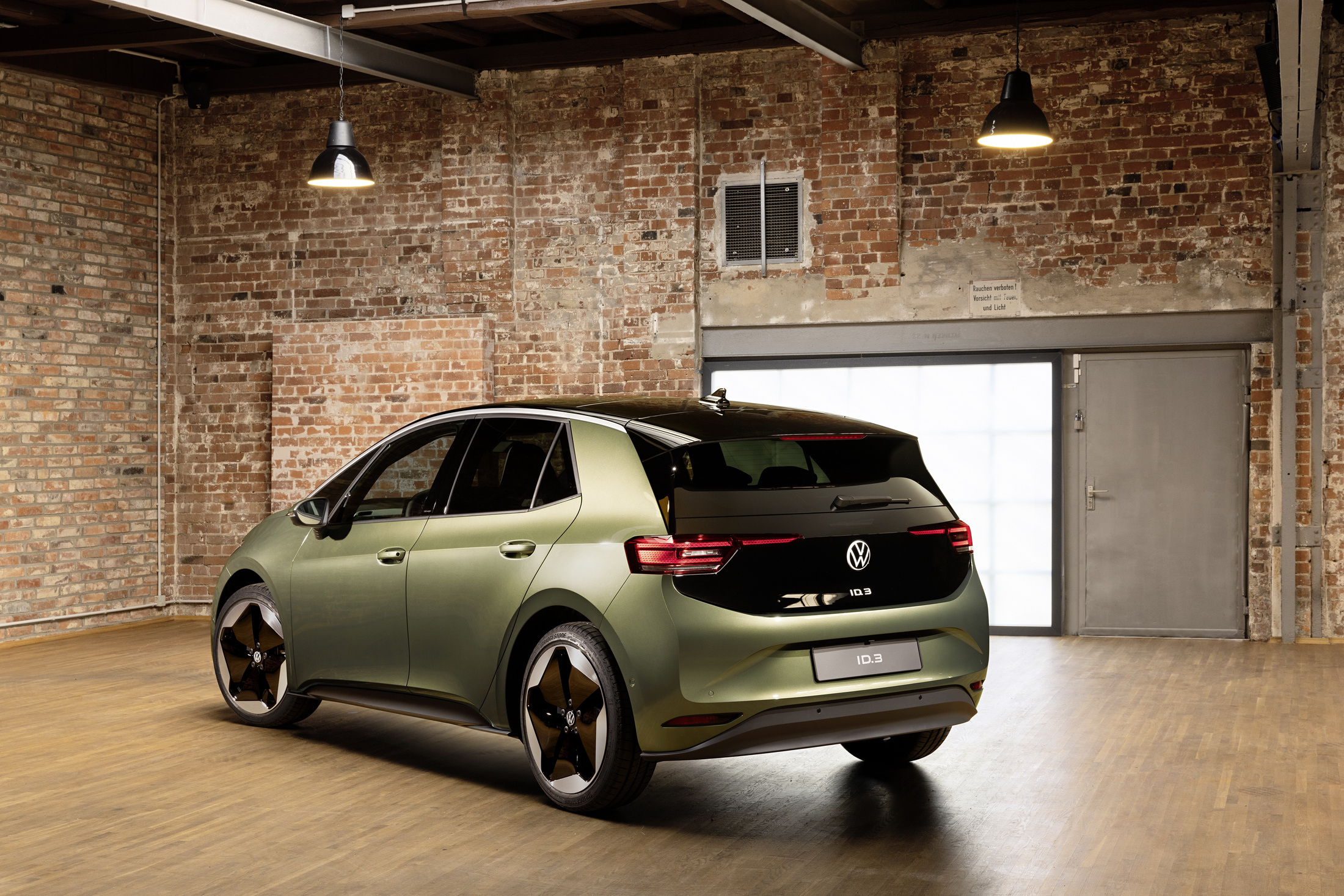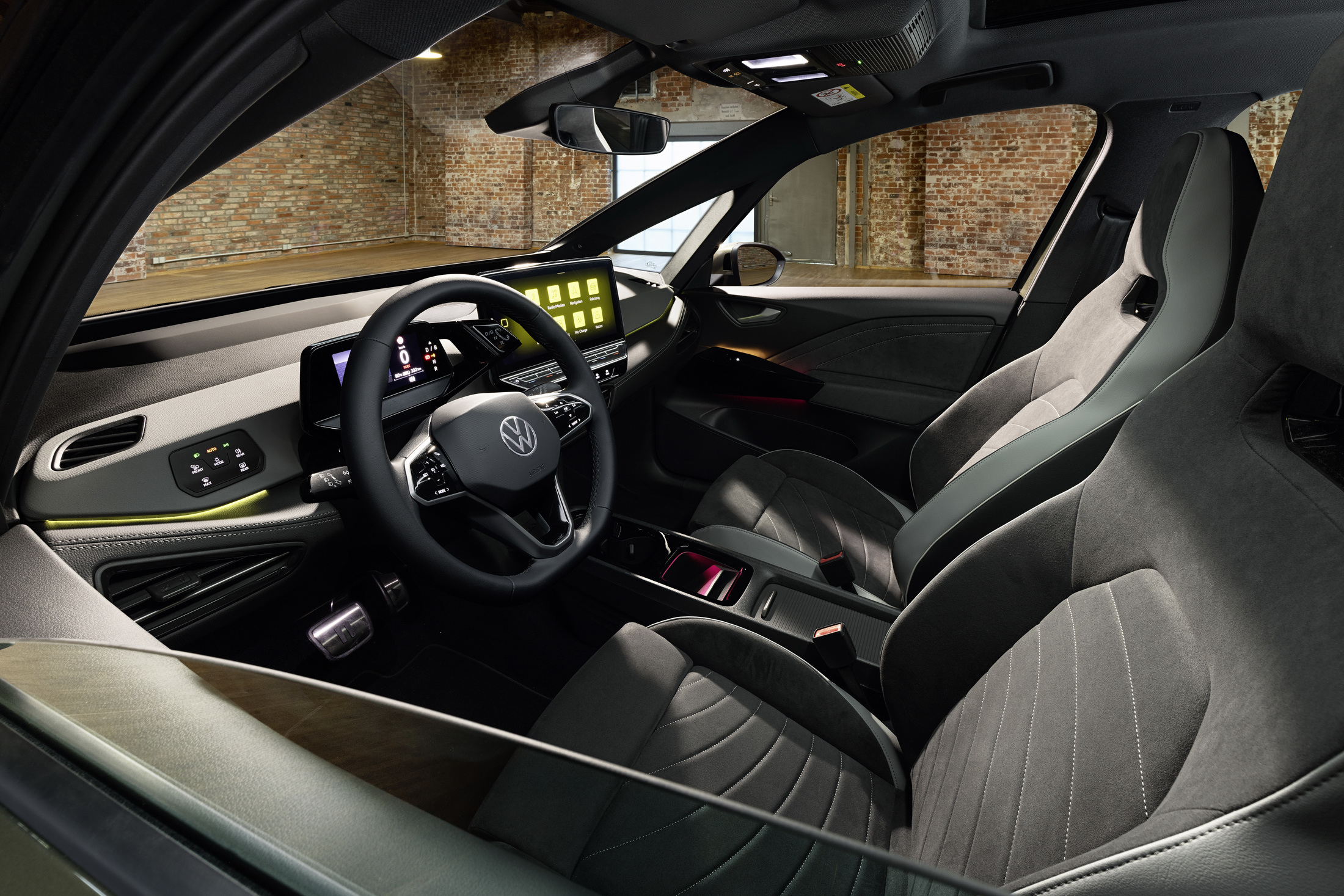The Volkswagen ID.3 can be seen as the Golf for the electric era, so it’s big news when there’s an update. That’s the case today as Volkswagen has unveiled the “second-generation” hatchback.
That’s stretching things a bit as this is really more of a facelift and Volkswagen acknowledged the car benefits from a “comprehensive upgrade,” rather than a full redesign. That being said, there are a number of changes so let’s dive right in.
A Sportier And More Expressive Design
The ID.3 was introduced less than four years ago, so it’s not old by any stretch of the imagination. However, that didn’t stop designers from freshening things up a bit.
While the car is instantly recognizable, it adopts a new front bumper with an “optimized” intake as well as an active shutter system. It looks a bit classier than the old setup and the central intake is now joined by pronounced air curtains, which improve air flow around the front wheels.
One change that doesn’t immediately stand out is the new hood, which is easy to overlook. However, Volkswagen noted it “now appears longer because the black strip under the windscreen has been removed and recessed sections at the sides create an additional impression of visual lengthening.”
The rear end appears to carryover at first glance, but there are lightly revised taillights. While they look virtually identical to their predecessors, Volkswagen noted the elements on the hatch now illuminate. Furthermore, the brake lights create an X-shape while there are also dynamic turn signals.
Lastly, there’s a new Dark Olivine Green exterior which “stands for exclusivity and premium value.” Volkswagen says the “iridescent metallic paint has a warm, gold pearl effect and supports the modern, clean-cut contours of the exterior design.” It’s contrasted by a black roof and matte silver trim.
In terms of size, the new ID.3 measures 167.8 inches (4,261 mm) long, 71.2 inches (1,809 mm) wide, and 61.5 inches (1,562 mm) tall with a wheelbase that spans 109.1 inches (2,770 mm). Virtually all of those dimensions carryover, but the model is 0.2 inches (6 mm) lower than its predecessor.
A Classier Cabin With Soft-Touch Accents And Recycled Materials
The déjà vu design continues in the cabin, but Volkswagen listened to owners and made a handful of improvements. Besides sporting higher quality materials, the ID.3 has been equipped with new soft-touch accents as well as updated doors with more generous armrests.
Buyers will also find Artvelours Eco microfiber upholstery on the seats and door panels. It’s a classy looking material and Volkswagen says the “fabric is 71 percent recyclate, a secondary raw material obtained by recycling plastic waste that has previously been disposed of at least once.”
The rest of the cabin largely carries over, but we can see new center air vents with “ID.3” badging. Buyers will also find a 5.3-inch digital instrument cluster and a standard 12-inch infotainment system. They can be joined by an augmented reality head-up display with dynamic navigation instructions that appear to be projected 33 feet (10 meters) in front of the vehicle.
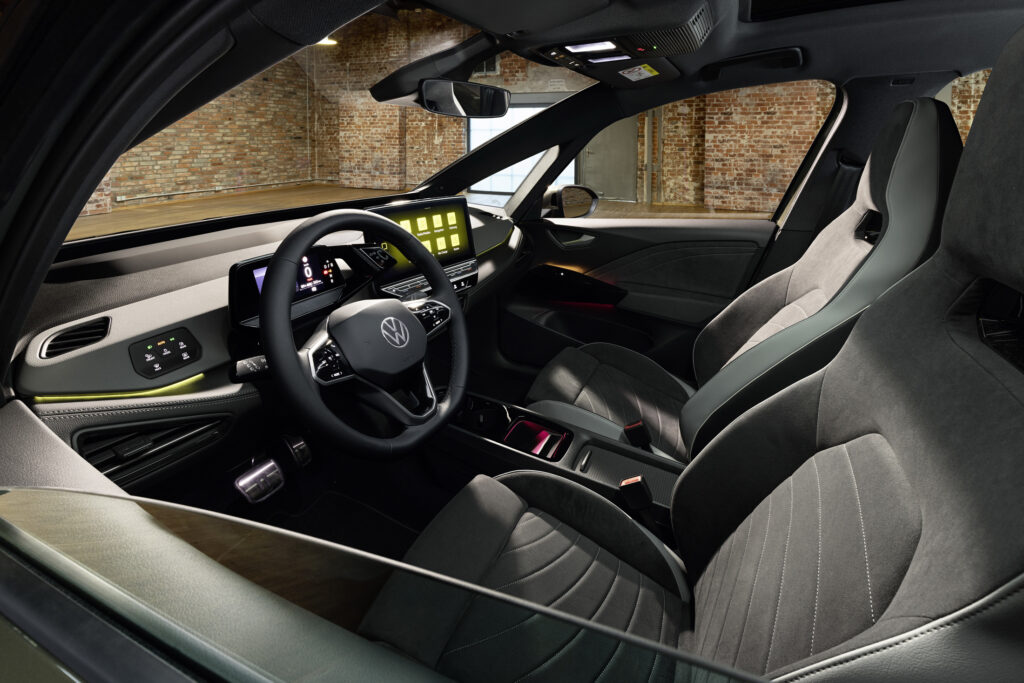
Other highlights include a ten color ambient lighting system and a luggage capacity of up to 44.7 cubic feet (1,267 liters) with the rear seats folded-down. The model can also be equipped with an assortment of driver assistance systems including Adaptive Cruise Control, Lane Assist, Travel Assist with automated lane changes, and Park Assist Plus with a memory function that can “reproduce individual, pre-learnt maneuvers.”
The ID.3 also sports vehicle-to-everything (V2X) technology, which enables the model to talk to compatible vehicles and infrastructure within a radius of up to 2,625 feet (800 meters). If accidents or hazards occur, a warning can be sent out to warn other motorists.
A 201 HP Electric Motor And Up To 339 Miles Of Range
Power is provided by a 58 or 77 kWh lithium-ion battery pack. The former gives the ID.3 Pro a WLTP range of up to 265 miles (426 km), while the latter enables the ID.3 Pro S to travel up to 339 miles (546 km) on a single charge.
Regardless of which battery is selected, power is provided by a rear-mounted electric motor that develops 201 hp (150 kW / 204 PS) and 229 lb-ft (310 Nm) of torque. This enables the ID.3 Pro to accelerate from 0-62 mph (0-100 km/h) in 7.3 seconds, while the ID.3 Pro S accomplishes the same task in 7.9 seconds. That being said, both models have a top speed of 99 mph (160 km/h).
When it comes time to charge, the ID.3 Pro can go from a 5 to 80% charge in 35 minutes with a 120 kW fast charger. The ID.3 Pro S has a charging capacity of up to 170 kW and this enables it to get an 80% charge in as little as 30 minutes.
The 2024 ID.3 features a Plug & Charge capability and Volkswagen noted “bidirectional charging will also be possible at home in the future in combination with a suitable home energy management system.” This promises to be a boon for consumers as they’ll be able to use their car to power their home during outages.
The New ID.3 Arrives Later This Year
The facelifted ID.3 went up for order in December and the ID.3 Life starts at €43,995 in Germany. Deliveries are slated to begin in the fourth quarter and Volkswagen will start building the model in Wolfsburg to help meet demand.
Speaking of the latter, Volkswagen confirmed a “smaller battery is planned for the future.” As a result, customers might want to hold off as it appears a cheaper ID.3 is on the horizon.
